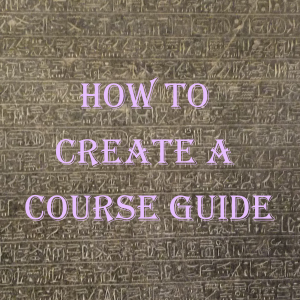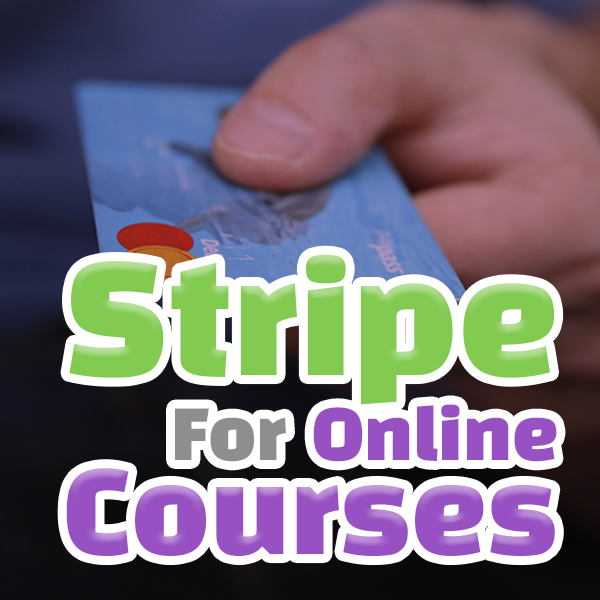Introduction
Your Ideal Target Audience (ITA) is an essential component of any successful online course. It refers to the specific group of people that the course is designed for and aimed at.
By understanding and effectively targeting the ITA, course creators can increase enrollment, improve student engagement, and boost course completion rates.
In this lesson, we’re learning about understanding your ideal target audience or ITA so that you can make excellent marketing materials and we break out the steps involved in identifying and defining the ideal target audience for an online course.
Challenges online course creators can face if they don’t identify their Ideal Target Audience:
- Without a clear understanding of who the course is intended for, it can be challenging to effectively market the course and attract the right students.
- If the course material isn’t tailored to the specific needs and interests of the target audience, students may not find it engaging and may drop out.
- If the course creators don’t know their target audience, they may not understand the most effective way to present the material, leading to a poorly designed course.
- If the target audience is not properly identified, it can lead to ineffective marketing strategies that fail to reach the intended audience.
- If students don’t find the course relevant to their needs, they may not complete it, leading to lower course completion rates and overall student satisfaction.
Video Lesson – How To Create a More Successful and Effective Online Course
What Is an Ideal Target Audience?
An Ideal Target Audience is an insightful description of the perfect customer you want for your products and services. You’ll still accept other customers, but this is the perfect customer who values every aspect of your services, whether it’s a course or a community, or coaching. This customer resonates with all the messaging that you’re putting there, and all the examples and everything that you’re describing is exactly for this perfect Ideal Target Audience.
Sometimes the ITA is also known as:
- the avatar
- the ideal customer target (ICT)
- target customer persona
So we’ll be using the ideal target audience, but it’s very similar for all the variations. You’re going to have to do some research. You probably already have a plan, but you’re going to fine-tune and niche down and understand your students, whether they’re just a student that wants to learn how to sew or they’re already sewing but want to get to the next level.
All these different variations of your creative students you need to think about. So let’s go over some important things. As you brainstorm and create a cheat sheet, first you create some options, then you can hone in and zoom in on that perfect ideal target audience. And then from there, you can develop words and phrases and pain points.

Important Attributes of an Ideal Target Audience
Here are some important attributes that you can use to better define your ITA:
Name
So the first thing is you’ll want to have a column header or document header, a name for this avatar, or this target. So you can make it a memorable name. It could be a descriptive word like the new sower, existing seamstress, or any description that you want to describe the two or three different target audiences.
Then you’re going to give each one a good descriptive name. That’ll help you refer back and brainstorm with other people, and also, you can make notes and reference to this ideal target audience’s needs.
While this other audience, maybe, doesn’t need to go so deep in a course, they need a broad overview you’ll be able to describe and write notes about your different audiences.
Background
Next up, you will want sections containing all the different parts of their background for this target audience. So it’ll be demographics, psychographics, things like age, gender, income, location, lifestyle, personality, values, and media. What media do they consume? Where do they learn their information? What blogs, YouTube channels, and books do they follow?
You need to have a good idea about this target audience so that you can know what level they’re at, what they’re learning, what kind of knowledge they know, and so that you can target and speak the right language with them and help them out.
Stage
The next one is what stage is your target audience at? Are they total beginners? Are they mid-level in their career? Are they doing great, but they want to level up, or do they want to expand or get into that specific topic? What is it that they want? And where they are in that stage so that you can appropriately help them and use the right words.
Interests
Next up is niching. So this is the specific interest area. Their exact expertise, their specialty. So you’re not just speaking fashion, but you’re saying they’re a shoe designer, or maybe they’re purse designers. You will be speaking very specifically about the use cases.
So you’re not going to broadly talk about fashion, but you’re going to talk about shoe design or some other specific type of sub-industry. And they’re going to know that this course, this community is just for them because that matters.
Problems
Next up are the problems. What is your target audience facing? What are the most painful knowledge gaps or challenges, or even fears, that your customers have? You’re going to be able to describe them. Say, “hey, if you’re having this problem, this course can help you.”
This community will support you. So it’s really good to think about that specific target and their problem. If you go too broad, the problems are vague and not specific. They’re not going to hit home, and they’re different kinds of problems.
Goals
So next is the goals. What are the goals of your specific target audience? What do they want to learn to do, achieve, or become? It’s like the wants. What are the wants of your target audience? And that’s their goal. You should be clear and understand what their real goal is.
Solutions
Finally, what are your solutions? You’re the creative teacher. What are your solutions, your courses, your resources, your community, and even combinations of courses? Start with this high-level thing, and then you dig into this next spotlight course.
But what are your solutions that cater to this target audience now that you understand them? Their background, their stage, their niche, their exact problems, and where they want to go. What’s that transformation that they want to achieve?
Defining Your ITA
I recommend you create, Google Docs, and Google Sheets to get some notes out, create a couple of columns or a couple of docs so you could cross-compare. Then, maybe initially, you have five different target audiences, and you’ll bring that back down to three, for instance.
You’ll prioritize your different audiences, and then you can add more detail to understand your target audience. Once you do, you will want to leverage all of this in your marketing and sales material.
So you’re going to go ahead and create your ITA, then start updating your sales.

Leveraging Your ITA Research For Marketing and Sales
Let’s go over some marketing components and how you might want to use some of what you’ve just researched for your ITA.
Headline
For instance, on a sales page, you might have a headline, so you’ll grab their attention, right? You’ll use some words that mean something to your target audience. On your sales page, you might have a section that answers the questions; who is this course for? Who is this not for?
You’ll be able to use that target audience information by speaking exactly to them. What stage are they at? What sub-niche are they at? What current knowledge do they have? What income do they have? Where do they want to go?
Benefits
Next up, you might have benefits, and the benefits are going to talk about the outcomes that matter to these ITA. Then you might go over pain points, stuff they’re struggling with.
Problems
After your research, you’ll be able to identify a handful of problems your ideal customers are struggling with. You’ll be able to call that out, and they’ll be able to see it and say, yes, that’s me.
Services
And then your services, you will be able to come up with service names and service descriptions that match the pains and goals, and challenges that your students want.
Testimonials/reviews
Even with testimonials or reviews, you’re going to be able to extract the right content, testimonials, and words that use the language that your ideal customers are struggling with. It’s going to resonate.
Transformation
Can you describe the future state of your ideal target audience? Each of your audiences might have different goals, but once you hone in on that ideal target, you’re going to be able to understand where they want to go, and you’re going to be able to describe that. After this course, in the future, you’re going to be able to do certain things.
So as an example, you may have a lead magnet to get email subscribers. Does your lead magnet speak to your ideal target audience? Or is it vague and broad for your industry, which might be nice?
Ads
The same thing with ads. When you’re creating ads, there’s a couple, a handful of phrases that you might use that are those big words on your ads.
What are those big words? You only have a few characters and a few words on each ad. So by studying your ITA, you will be able to identify a specific hook or a pain that appeals directly to your ideal target audience.
Frequently Asked Questions about Multiple Intelligences

Summary – Ideal Target Audience
Ideal Target Audience (ITA) is a necessary component of any online course, as it helps course creators to tailor the course content, marketing strategies, and overall course design to meet the specific needs and interests of the target audience.
A clear understanding of the ITA can lead to increased enrollment, improved student engagement, and higher course completion rates. To identify the ITA, course creators can conduct market research, analyze current students, consider the subject matter, and utilize social media platforms to gather information.
By following these steps, online course creators can get a better understanding of their Ideal Target Audience and create a more successful and effective online course.
Here are some tips for identifying your Ideal Target Audience:
- Understanding the goals of the course and what the students hope to achieve by taking it can help to identify the ITA.
- Look at the demographics of the current students enrolled in the course and see if there are any patterns or similarities that can help identify the target audience.
- Conduct surveys, focus groups, or other forms of market research to get feedback from potential students about their needs, interests, and preferences.
- Consider the subject matter of the course and think about which groups of people would be most interested in learning about that topic.
- Identify the common problems the target audience faces and how the course can help solve those problems.
So now you’re a lot smarter on ideal target audiences. There’s more information in the notes.
Please subscribe to get more resources for online teachers. Whether you need help with your community or your courses, or your teacher’s website, visit www.artsycourseexperts.com.
More Tips For Online Teachers
These lessons can also help you with course engagement, growth, and planning
- Planning a Course Business with Ikigai
- Diversity, Equity, and Inclusion (DEI) For Online Course Creators
- SWOT Analysis For Courses
- Bloom’s Taxonomy for Creative Teachers
- Using The ADDIE Model To Design Effective Online Courses
Related Services For Teachers and Experts
We offer these services to help your course engagement, growth, and planning:
- Online Course Coaching
- Analyze Class Curriculum – Outline & Lessons
- Course Technology Maintenance
- Community Technology Maintenance
- Build An Online Course











